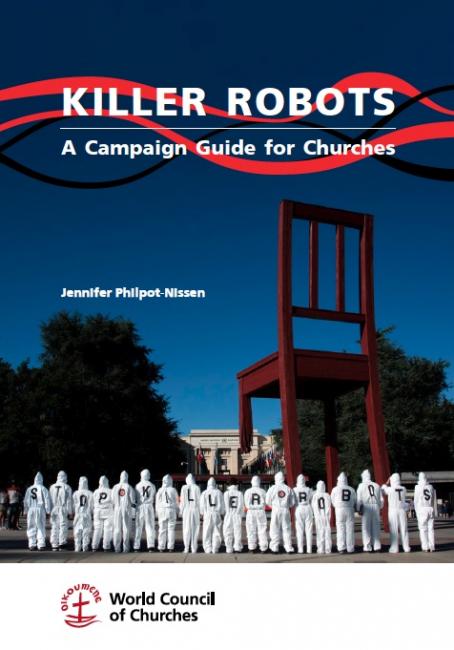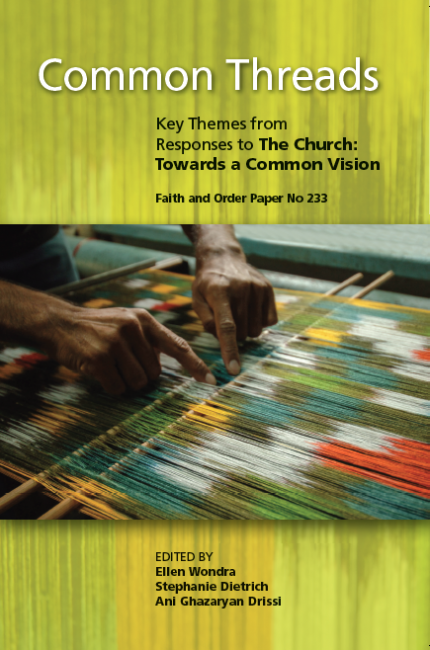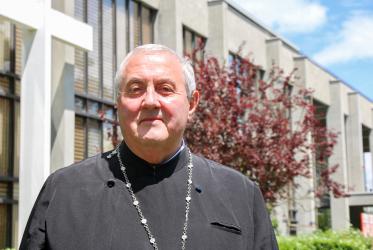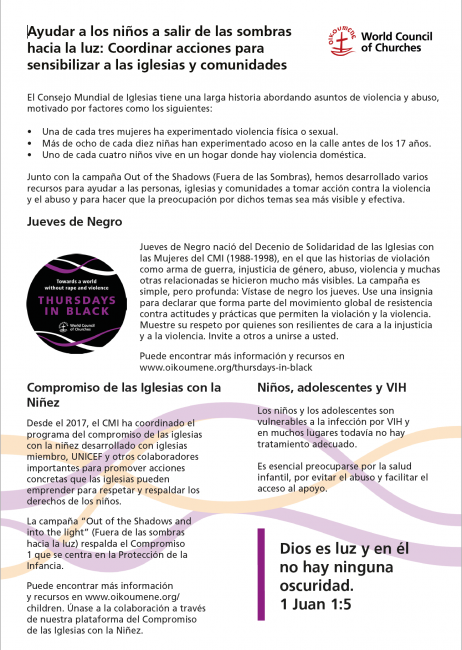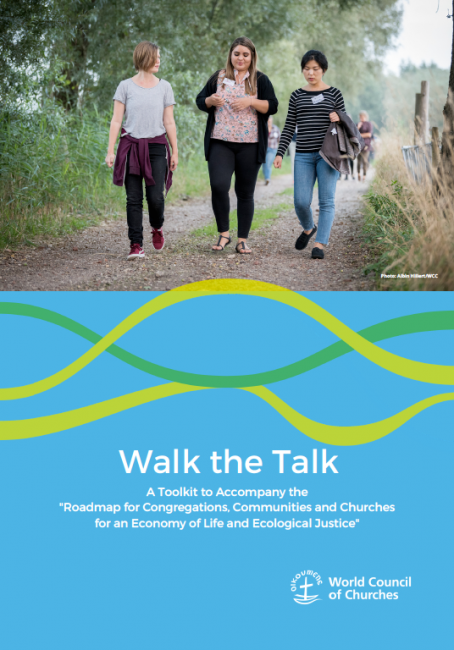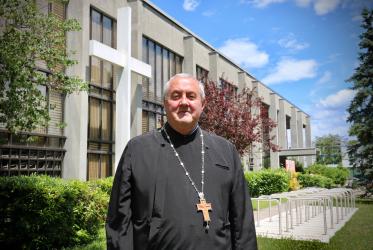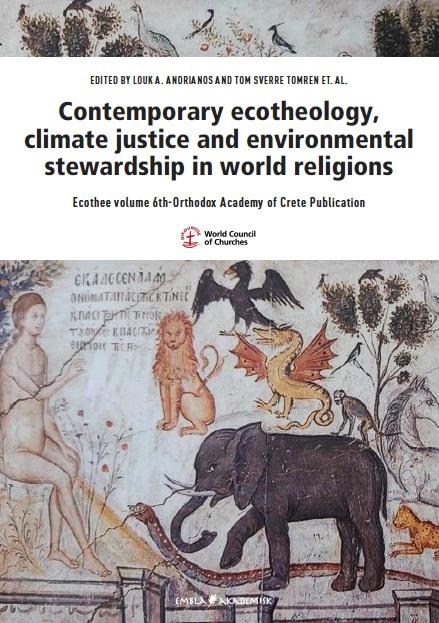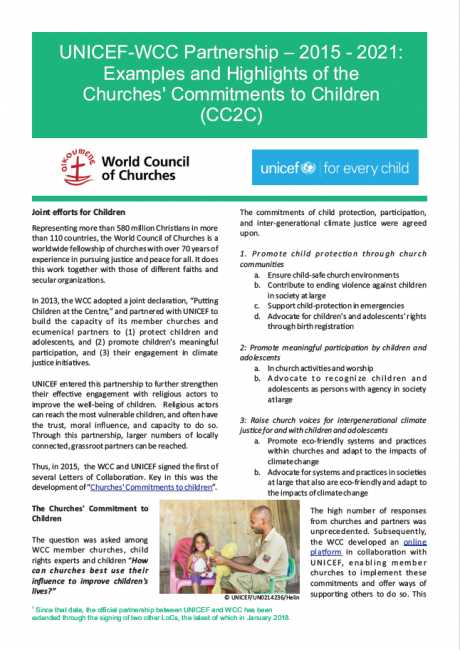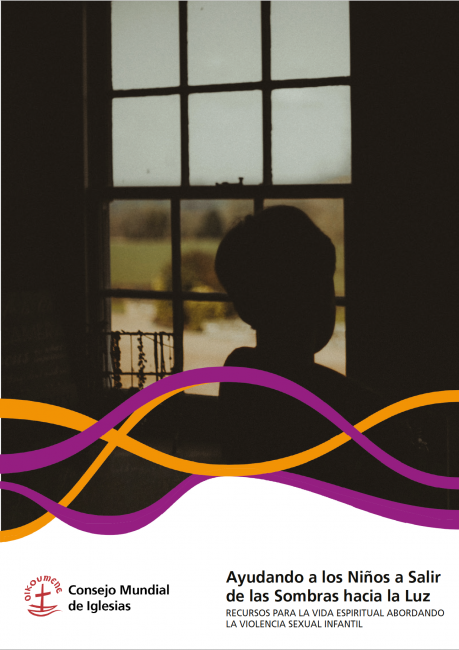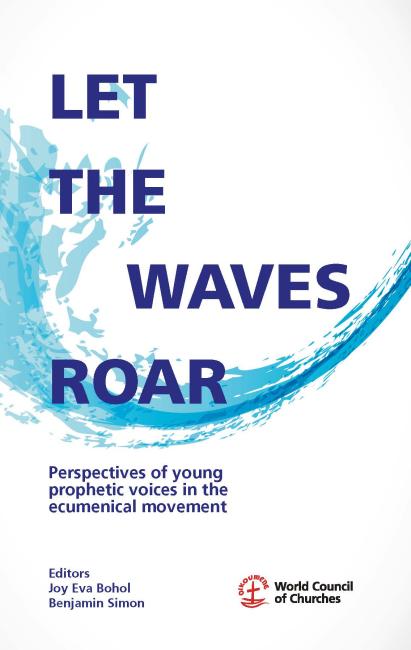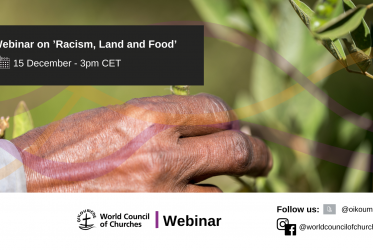Anzeigen von 121 - 140 von 343
Pilgrims on the Path of Peace
The Journey of the WCC from Busan to Karlsruhe (Unillustrated)
28 Februar 2022
Common Threads
Key Themes from Responses to The Church: Towards a Common Vision. Faith and Order Paper No 233
25 Februar 2022
WCC shares greetings with Jamaica Baptist Union
24 Februar 2022
Aider les Enfants à Sortir de l’Ombre à la Lumière
Ressources de la Vie Spirituelle Pour Aborder Violences Sexuelles Contre les Enfants
15 Februar 2022
Les Jeudis en Noir: Aider les Enfants à Sortir de l’Ombre à la Lumière
Conjuguons nos actions pour une prise de conscience dans les Eglises et les communautés.
15 Februar 2022
Tutu’s legacy: A Zoom panel celebrating “the Arch”
03 Februar 2022
Walk the Talk / Dalle parole ai fatti
Tabella di marcia per chiese e comunità per un’economia di vita e per la giustizia ecologica.
02 Februar 2022
De las palabras a la acción
Conjunto de herramientas para acompañar la «Hoja de ruta para las congregaciones, las comunidades y las iglesias para una economía de vida y una justicia ecológica»
22 Dezember 2021
Contemporary Ecotheology, Climate Justice and Environmental Stewardship in World Religions
Ecothee Volume 6th-Orthodox Academy of Crete Publication
19 Dezember 2021
Aider les Enfants à Sortir de l’Ombre à la Lumière
Ressources De La Vie Spirituelle Pour Aborder Violences Sexuelles Contre Les Enfants
19 Dezember 2021
Let the Waves Roar
Perspectives of Young Prophetic Voices in the Ecumenical Movement
19 Dezember 2021
